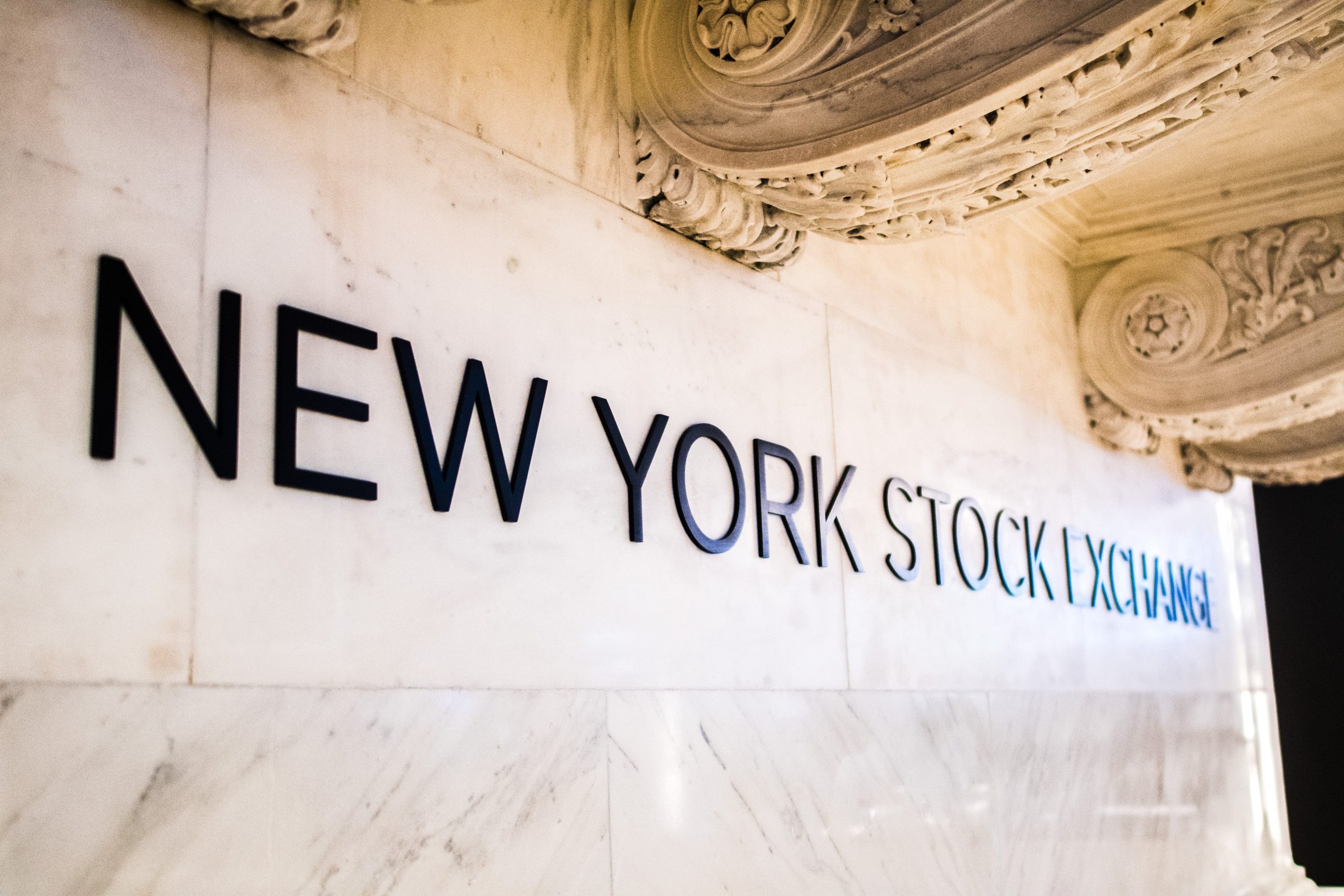This site uses cookies to provide you with a great user experience. By using BondbloX, you accept our use of cookies.
Bond Market News
Cinda, Huaneng, HDB Launch New Bonds; T-Mobile Upsizes Issuance to $3bn; CFLD $ Bonds Take Another Beating; Vedanta Launches Consent Solicitation
January 12, 2021


S&P and Nasdaq saw their rallies come to a halt with the indexes down 0.7% and 1.3% on Monday. Tesla fell 7.8% while Twitter fell 6.4% after permanently suspending Trump’s account. European equities also had a similar move, down 0.3-0.8%. While elements of risk-off were observed in stock markets, government bonds continued to firm as German Bund yields and US 10Y Treasury yields were 4bp higher each. With regard to the Fed’s interest rate path, Kenneth Broux, a strategist at SocGen said, “Markets are now definitely pricing in rate hikes by the second half of 2023, but the time frame is a long way away and it will keep shifting, especially if the U.S. continues to lose jobs as they did in December”. US IG CDS spreads were 1.5bp wider and HY was 7.9bp tighter. EU main and crossover CDS spreads also widened 1.5bp and 7.3bp respectively. Asia ex-Japan CDS spreads widened 1.8bp and Asian equities have opened ~0.2% higher.
Bond Traders’ Masterclass – Avail 30% on a Bundle Ticket of 5 Sessions
BondEvalue is conducting a Bond Traders’ Masterclass across five sessions specially curated for private bond investors and wealth managers to develop a strong fundamental understanding of bonds. The sessions will be conducted by debt capital market bankers who have previously worked at premier global banks such as Credit Suisse, Citi and Standard Chartered. Click on the image below to register.
We are also conducting a complimentary session on Navigating The Bond Markets by Leveraging The BEV App today at 6pm Singapore time. This session is aimed at helping bond investors in tracking their investments using the BondEvalue App.
New Bond Issues
- Changzhou Eastern New City Construction $ 3Y at 3.7% area
- Yuexiu Property $ 5Y/10Y at T+275bp/T+305bp areas; books at $3.1bn
- China Cinda (HK) $ 3Y/5Y/7Y/10Y at T+150bp/T+175bp/T+215bp/T+230bp areas; books over $13.5bn
- China Huaneng Group $ 5Y/10Y at T+150bp/T+185bp areas; books over $3bn
- HDB S$800mn 5Y at 0.635%
- LAMAR $555mn 10Y @ 3.625%

Deutsche Bank NY raised $1.25bn via a 11Y non-call 10Y (11NC10) Tier 2 bond at a yield of 3.729%, or T+260bp, 40bp inside initial guidance of T+300bp. The bonds have expected ratings of Ba2/BB+/BB+. The coupon is fixed until January 14, 2031 and if not redeemed, will reset to the daily compounded SOFR with 2-day payment delay plus initial spread. The bonds trade at a new issue premium of 22bp to their 5.882% July 2031s which currently yield 3.51%.
Olam raised S$250mn via a perpetual non-call 5.5Y (PerpNC5.5) bond at a yield of 5.375%, 12.5bp inside initial guidance of 5.5% area. The bonds were unrated and no distribution data was released, although private banks were given a concession of 25 cents according to IFR. The subordinated bonds will reset at the end of 5.5 years and every five years thereafter to the prevailing SGD SOR and the initial credit spread. There will also be a step-up of 200bp from year 5.5. Proceeds will be used for debt refinancing and other general purposes.
Agricultural Bank of China (ABC) NY branch raised $950mn via a dual tranche offering. It raised $650mn via a 3Y bond at a yield of 0.899%, or T+68bp, 42bp inside initial guidance of T+110bp area. It also raised $300mn via a 5Y green bond at a yield of 1.29%, or T+80bp, 40bp inside initial guidance of T+120bp area. The bonds have expected ratings of A1, and received orders over $3.5bn, 3.7x issue size. BofA and Credit Agricole were structuring advisers for the green tranche.
SPDB Singapore branch raised $300mn via a 3Y bond at a yield of 1.056%, 36bp inside initial guidance of T+120bp area. The bond has expected ratings of Baa2, and received orders over $1.6bn, ~5.3x issue size. The bond will be drawn from Shanghai Pudong Development Bank’s MTN programme and proceeds used for working capital and general corporate purposes.
DaFa Properties raised $180mn via a 364-day bond at a yield of 12.125%, 27.5bp inside initial guidance of 12.4% area. The bonds received orders over $1.1bn, ~6.1x issue size. Proceeds will be used for debt refinancing.
Telecom Italia raised €1bn ($1.22bn) via an 8Y sustainability bond at a yield of 1.75%, 50bp inside initial guidance of 2.25% area. The bonds have expected ratings of Ba2/BB+/BB+ and received orders over €2.8bn, 2.8x issue size. Proceeds will be used for eligible green and social projects in accordance with the TIM Group Sustainability Financing Framework.
Beijing Capital Group raised $400mn via a 5Y senior bond at a yield of 4.65%, 47.5bp inside initial guidance of 5.125% area. The bonds have expected ratings of BBB and received orders over $1.85bn ~4.63x issue size. The company had also planned to issue a subordinated perpetual non-call 3.5Y (PerpNC3.5Y) bond, but dropped it due to weak demand for the tranche. Proceeds from the 5Y will be used for offshore debt refinancing.
Fujian Zhanglong raised $400mn via a 2Y11M bond at a yield of 3.45%, 25bp inside initial guidance of 3.7% area. The bonds were rated BBB- and received orders over $1.4bn, 3.5x issue size. Proceeds will be used for general corporate purposes and offshore debt refinancing.
New Bond Pipeline
- Dubai Aerospace Enterprise $ bond
- Chengdu Xingcheng Investment $ bond
- Nippon Life $ 30NC10
- Zurich Insurance $ 30.25NC10.25
- Singapore Airlines $ bond
- Sritex $ Yankee bond
- Tower Bersama $ bond
- SK Hynix $ bond three-tranche including green bond
- PFC $ bond
- REC $ bond
Rating Changes
- Antero Resources Corp. Upgraded To ‘B’ By S&P On Improved Maturity Profile; Outlook Stable; New Notes Rated
- Moody’s upgrades Antero Midstream’s CFR to B1
- Moody’s downgrades INEOS Quattro (formerly Styrolution) to Ba3 with negative outlook; senior secured debt at Ba2
- YPF S.A. Downgraded To ‘CC’ From ‘CCC-‘ And Off CreditWatch Negative By S&P On Debt Exchange Proposal, Outlook Negative
- Vector Group Ltd. Outlook Revised To Positive By S&P On Expectation For Improving Credit Metrics, Ratings Affirmed; Debt Rated
- CEC Entertainment LLC Assigned ‘CCC’ ICR By S&P Following Emergence From Bankruptcy, Outlook Negative; Exit Facility Rated
- Fitch Affirms and Withdraws Banco Santander Chile’s Ratings
2020 Bond Market Round Up – Latin America
Carribean-based telecom operator Digicel led the best performing bonds from Latin America in 2020, with its 6.75% 2023s ending the year 32% higher in price terms ex-coupon. The bonds traded higher post the company’s debt reduction plan announced in June last year, which would reduce its total debt by $1.6bn to $5.4bn and reduce annual interest expenses by $125mn. This, coupled with a ruling by a Paris court that ordered French rival Orange to pay Digicel $280mn in compensation for anti-competitive practices led to the rally in its bonds. Other prominent names that made it to the best performing bonds list include Chile-based retailer Cencosud, Mexican corporates Grupo Bimbo, Mexichem (now Orbia), Grupo Televisa, IEnova, America Movil, Minera and Coca Cola Femsa, Brazil-based Klabin, Vale and Suzano and the Uruguay and Mexico sovereigns.
The worst performing bonds in 2020 were largely corporates that were severely impacted due to the coronavirus pandemic. Chile-based Latam Airlines topped the list with its 7% 2026s losing over half of its value through the year. Other travel-related corporates that made it to the list include Argentine airport operator Aeropuertos Argentina 2000 and Brazilian carriers Gol and Azul. Sovereign bonds from Bahamas, El Salvador, Costa Rica and Bolivia and local government bonds from Argentine provinces Cordoba and Neuquen also made it to the list.

LatAm issuances were dominated by sovereigns with Brazil, Mexico, Panama, Peru and Argentina featuring among the largest issuers. Among corporate issuances Petrobras, FEMSA and Ecopetrol were the largest issuers with sizes between $2-2.5bn followed by Vale. Whilst not in the largest deals, a noteworthy issuance was Suzano’s $750mn sustainability-linked bond (SLB) in September, the first of its kind from the LatAm region, which carries a coupon step-up of 25bp if it does not reduce GHG emissions by15% by 2030.

In case you missed it, we summarized the bond market in terms of best/worst performing bonds, largest deals and issuance volume for global and Asian dollar bonds in 2020. You can read the full report via the button below:
CFLD Bonds Plummet 25-30% As Investor Fears Heighten; 8-10% Recovery This Morning
China Fortune Land Development (CFLD) saw its dollar bonds plummet a further 25-35% on Monday following last week’s correction, before recovering part of the losses this morning. CFLD Cayman’s 6.9% 2023s, 8.6% 2024s and 6.92% 2022s were the worst hit, from 30-35%. Debtwire reported that the parent CFLD Holdings had wired funds to meet early redemptions of CNY 1.4bn ($216mn) requested by investors for two privately issued puttable bonds onshore. The company first wired 20% of the funds on Wednesday, and fully remitted the remaining funds to the clearing house on Friday, according to the report citing a company source. The property developer and its subsidiaries need to repay/refinance ~$4.4bn of its onshore and offshore debt this year, about 40% of its total bonds as per Bloomberg data. “It is a lightning rod for the policy restrictions and deleveraging fears, such as the three red lines policy that curbs developers’ debt metrics, and the bank lending restrictions. There’s concern the firm could be the first casualty of Beijing’s policy tightening focus” said Owen Gallimore, head of credit strategy at ANZ Singapore.


Vedanta’s Dollar Bonds Inch Up on Offer to Increase Stake in Indian Unit and to Amend Terms
Vedanta Resources Ltd (VRL) dollar bonds were up ~1 point across the curve with the company launching an open offer to acquire up to a 10% stake in its Indian unit Vedanta Ltd, as per a filing. The parent has offered to buy up to 370mn shares at INR 160 ($2.18) a share. If successful, it would cost INR 59.5bn ($8bn). The company noted, “This is in line with our stated strategic priority for simplifying the Group structure to align the Group’s capital and operational structures, streamline the process of servicing the Group’s financing obligations and improve a range of important credit metrics. The simplification process, which has been underway for several years has involved mergers of Group companies and may involve other share acquisitions in accordance with applicable law.” The move comes after the failed delisting efforts of its Indian subsidiary late last year have significantly improved VRL’s cash and liquidity position according to Moody’s.
Vedanta also launched a consent solicitation to pay $0.5 per $1,000 in principal to bondholders for its $900mn 8.25% 2021s, $1bn 6.375% 2022s, $500mn 7.125% 2023s, $1bn 6.125% 2024s, $400mn 8% 2023s, $600mn 9.25% 2026s and $1bn 13.875% 2024s. This amount will rise to $1 per $1,000 if the holders give consent by the early-bird deadline of January 27. The reason for the consent solicitation is to provide VRL and its subsidiaries with the ability to incur debt solely for the purpose of acquiring shares in Vedanta Limited even if the requisite Fixed Charge Coverage Ratio, as laid out in the Terms and Conditions in the Target Bonds, is not being met. The threshold required to pass an Extraordinary Resolution in respect of any series of the Target Bonds is a majority of not less than two-third of the votes cast by the requisite quorum and the voting deadline is January 29.
Vedanta’s dollar bonds were up over 1 point yesterday. Currently, their 6.375% 2022s are up 0.75 to 92.25 and their 8% 2023s are up 0.25 to 90.
For the full story, click here
Saudi Plans to Raise Over $5 Billion via Bonds
The Kingdom of Saudi Arabia is planning to raise $5bn in the coming days after it stayed away from the markets since April last year. The sovereign, with a total outstanding debt of ~$228bn, could use the proceeds towards its financing needs especially as oil prices had dropped drastically last year and in the wake of government spending to provide a stimulus to combat the pandemic. The price of oil has since rebounded to $55/barrel; however, this remains below the $80 mark required by Saudi to balance its budget. The Kingdom is also looking at reducing its fiscal deficit by taking multiple steps including spending cuts. A final decision on the expected issuance is still pending subject to market conditions. The new year has started with a flurry of bond issuances across the world and Franklin Templeton expects the issuance of bonds and Sukuks from the Gulf to touch $120bn this year compared to the record of $126bn set last year. Saudi Arabia’s 2% 2039s were down 0.51 at 107.8 and its 4.625% 2047s were down 0.73 at 119.75
For the full story, click here
China Saw $30 Billion of Bond Defaults in 2020; Default Rate to Rise This Year
According to China Merchants Securities Co., Chinese companies’ defaults are expected to overtake last year’s record on the back of tighter monetary policy hurting borrowers. About 39 companies (onshore and offshore) defaulted last year on a combined $29.8bn of bonds with the total value higher than the $25.9bn and $22.2bn in 2019 and 2018. While local defaults fell to CNY 137bn ($21bn), a drop of CNY 5bn ($772mn), offshore defaults rose to a staggering $8.6bn, 2.2x of last year’s from $3.9bn. The tech sector comprised 28% of the onshore defaults led by Peking University Founder Group, which also accounted for a large chunk of offshore defaults through related companies Nuoxi, Tsinghua Unigroup and Tuspark, followed by the consumer sector with Brilliance Automotive’s default. Five state-owned enterprises (SOEs) defaulted in the onshore segment. In the dollar bond space, financials accounted for 43% of defaults followed by tech and energy. China, which is among the first economies to recover post Covid has been focused on reducing debt in the system across sectors, particularly the property sector. Banks have been tightening lending to the housing sector while the regulators have come with the ‘three red lines’ framework to keep an eye on these companies. Meanwhile, these companies are coming out with interesting structures to ensure they can keep their heads above the water. As financial conditions tighten, China Merchants Securities expects defaults to increase in the new year.
For the full story, click here
Singapore Airlines Lines Up Debut Dollar Bond
Singapore Airlines (SIA), the flag carrier of Singapore is looking to issue its first-ever dollar bond to boost its liquidity, which has taken a hit due to low traffic volume ever since the pandemic set in. A term sheet for the dollar bonds revealed that Citibank would be the global coordinator with BofA Securities and HSBC as the joint bookrunners. While the vaccine presents hope for the travel sector, the return to complete normalcy is likely to happen only gradually. Singapore Airlines’ traffic was down 81% last year and is likely to recover to ~25% of its capacity this year. The airlines had raised S$1.35bn ($1bn) through the private placement of bonds and convertible notes last year. The proceeds from the bonds are vital to the company, especially as the news of the new strain of the coronavirus has subdued the positive sentiment created after the inoculation began across the developing world. Ezien Hoo, Singapore-based credit research analyst at OCBC Bank said, “Singapore Airlines is looking to diversify funding. They did a few successful fund raisings previously. Coming out at this time is a smart strategy”. SIA’s 3.5% 2030s and 3.13% 2027s were down 0.01 and 0.13 to trade at 100.7 and 100.74 respectively.
For the full story, click here
T-Mobile Raises $3bn via Three-Trancher Amid Spectrum Auctions
American telecom operator T-Mobile tapped the bond markets with a three-trancher totaling $3bn. It raised:
- $1bn via 5Y non-call 2Y (5NC2) bonds at a yield of 2.25%, 175bp over Treasuries and 12.5bp inside initial guidance of 2.375% area
- $1bn via 8NC3 bonds at a yield of 2.625%, 168bp over Treasuries and 12.5bp inside initial guidance of 2.75% area
- $1bn via 10NC5 bonds at a yield of 2.875%, 174bp over Treasuries and also 12.5bp inside initial guidance of 3% area
While orderbook details were not available at the time of writing, the deal seems to have met with strong investor demand as T-Mobile upsized the deal from the originally planned size of $2bn. While the new 5NC2s are rated BB+, the 8NC3s and 10NC5s are unrated. T-Mobile has an issuer rating of Ba2/BB+. Proceeds from the issuance will be used for general corporate purposes, which may include acquisition of additional spectrum and refinancing. Auctions for 5G airways in the US are heating up as the bidding has now crossed $80bn with several more rounds of bidding left, way over analyst estimates of $47bn, as per Bloomberg. Rivals Verizon and AT&T are also expected to hit the primary bond markets with new deals.
For the full story, click here
Credito Real & Marfrig Issue/Plan New Bonds to Fund Buyback
Mexican consumer finance company Crédito Real sold $500mn worth of new 7Y non-call 4Y (7NC4) bonds, raising money to buyback up to $215mn of its 7.25% 2023s. The new bonds due 2028 were priced at par to yield 8%, in line with where its existing bonds traded in the secondary market, as per Latin Finance. Initial price talks opened in the low-to-mid-8% area and set guidance at 8.125%, +/- 12.5bp before pricing at 8%. The new bonds are expected to receive a BB+ rating by Fitch, as “the company will hedge both FX rate risk and interest rate risk through derivative financial instruments” and will not increase Crédito Real’s market risk exposure. For the buyback of its 2023s, Crédito Real is offering $1,038.75 for every $1,000 in principal, including a $30 premium for bondholders that tender by January 20 and $1,008.75 per $1,000 in principal if tendered after January 20 but by the final deadline of February 3. The bookrunners on the bond sale and deal managers on the buyback were BNP Paribas, Goldman Sachs, Santander and SMBC.
For the full story, click here
Brazilian beef company Marfrig plans to issue 7Y bonds worth up to $1bn with proceeds to be used to buyback up to $1.25bn in outstanding bonds maturing in 2024 and 2025. The new bonds, issued through London-based subsidiary MARB BondCo, have an expected rating of BB on Mafrig’s strong market position and geographic diversification. Marfrig is offering $1,037.50 for every $1,000 in principal for its 2025s and $1,025 for every $1,000 in principal for its 2024s, including a $30 premium for bondholders who tender their notes by January 25. The final deadline is February 8. The deal managers on the buyback of its 7% 2024 and 6.875% 2024 bonds, are BNP Paribas, Bradesco, HSBC, JPMorgan, Santander and Jefferies. The same banks are most likely arranging the new issue.
For the full story, click here
Term of the Day
Schuldschein
Schuldschein (pronounced schuld-shine) is a debt instrument popular with German issuers that is similar to a bond albeit with lower expenses for the issuer. These instruments do not need to be registered at an exchange, thereby reducing documentation and time taken. They are more flexible than a bond, as they can be adjusted to the customer’s needs regarding repayment terms, drawdown periods, etc. and thus have some features of loans. Commerzbank notes that Schuldschein transactions can be arranged very quickly, with a tenor of 2 and 5 years, in order to improve asset-liability management (ALM). Lending can be done by one bank, which might look for participants afterwards. Trafigura has sought to raise €75mn via a debut Schuldschein.
Talking Heads
On the likelihood for strong US rebound, fanning talk of taper tantrum
Thomas Barkin, Fed Richmond Bank President
“I do think you’re looking at a second half that is going to be very strong and the question I think is how do we get through where we are today to that second half,” Barkin said. “We’ve given outcome guidance, not date guidance so I couldn’t tell you the day. I do think this notion of ‘substantial further progress’ is the right way to think about it,” he said. “So there are scenarios certainly where we see strong recovery in unemployment and inflation, but there are lots of scenarios where we don’t.”
Raphael Bostic, Fed Atlanta Bank President
“A lot of it will depend on how the virus and the vaccine distribution goes. But if it goes well — if we learn quickly — I think there is some good upside potential.”
Robert Kaplan, Dallas Federal Reserve President
“I don’t want to prejudge right now — while we’re in the teeth of the pandemic — when we’re going to get there. But I would hope it might be this year,” he said.
On hopes to start QE weaning this year – Robert Kaplan, Dallas Federal Reserve President
“We should be as aggressive as we can be while we are in the teeth of this pandemic, until we are convinced that we have weathered this pandemic,” Kaplan said. But “later this year, my own view is, we should at least be having an earnest discussion about when it’s appropriate to taper” the Fed’s asset purchase program.
On the need for more stimulus for the UK – Silvana Tenreyro, Bank of England policy maker
“We will see headline-grabbing negative growth numbers, followed by large positive ones when the economy is able to reopen,” Tenreyro said. “Crucial for jobs, incomes and inflation will be the level of output we recover to later in the year, rather than the changes in the interim.”
On the threat of surging bad debt on India’s financial stability
According to the semiannual Financial Stability Report published by the Reserve Bank of India
“Domestically, corporate funding has been cushioned by policy measures and the loan moratorium announced in the face of the pandemic, but stresses would be visible with a lag,” the Reserve Bank said. “This has implications for the banking sector as corporate and banking sector vulnerabilities are interlinked.”
Shaktikanta Das, Reserve Bank of India Governor
“Congenial liquidity and financing conditions have shored up the financial parameters of banks, but it is recognised that the available accounting numbers obscure a true recognition of stress,” Das wrote in the report. “It is in this context that banks must exploit the congenial financial conditions and the conducive policy environment to plan for capital augmentation and alterations in business models that address emerging challenges.” “Stretched valuations of financial assets pose risks to financial stability,” Das said. “Banks and financial intermediaries need to be cognizant of these risks and spillovers in an interconnected financial system.”
“We are the first Argentine province that has managed to restructure its debt without entering into default,” he wrote. “Cordoba took on this debt and now due to the crisis caused by the pandemic has restructured it, giving us a better financial outlook.”
“The expectation of further fiscal stimulus in the U.S. following the run-off elections result in Georgia, the removal of tail risk with a Brexit deal and the seasonal supply dynamic put pressure to higher long-end yields and to steeper curves,” they said. “However, increasing concerns about high infection rates and prolonged lockdown measures mostly across Western Europe combined with solid duration demand provide a lid on potential back up in rates.”
“This is a very positive story for credit assets,” Delbos and Garfin wrote. “Our base case expectation for leveraged credit is mid-single digit returns, with the majority of this being generated from carry/income and further spread tightening, but partially offset by slightly higher rates,” the portfolio managers said. “We believe markets will price through these near-term sources of volatility and would look to add risk on weakness,” Delbos and Garfin wrote.
On money markets ramping up bets on US interest rate hikes by 2023
Kenneth Broux, strategist at Societe Generale
“Markets are now definitely pricing in rate hikes by the second half of 2023, but the time frame is a long way away and it will keep shifting, especially if the U.S. continues to lose jobs as they did in December,” said Broux.
Ulrich Leuchtmann, head of FX and commodity research at Commerzbank
“In that context, the rise in bond yields is justified and consequently expectations in money markets is justified,” said Leuchtmann.
“The trend in yields will continue higher,” Bianco said. “Yields are probably justified given probably the $400 billion-plus stimulus that is going to come with a $2,000 check — with an infrastructure bill that’s coming after that and probably more stimulus down the road. More stimulus means more supply, and it means a higher chance of inflation.”
Top Gainers & Losers – 12-Jan-21*

Go back to Latest bond Market News
Related Posts:








